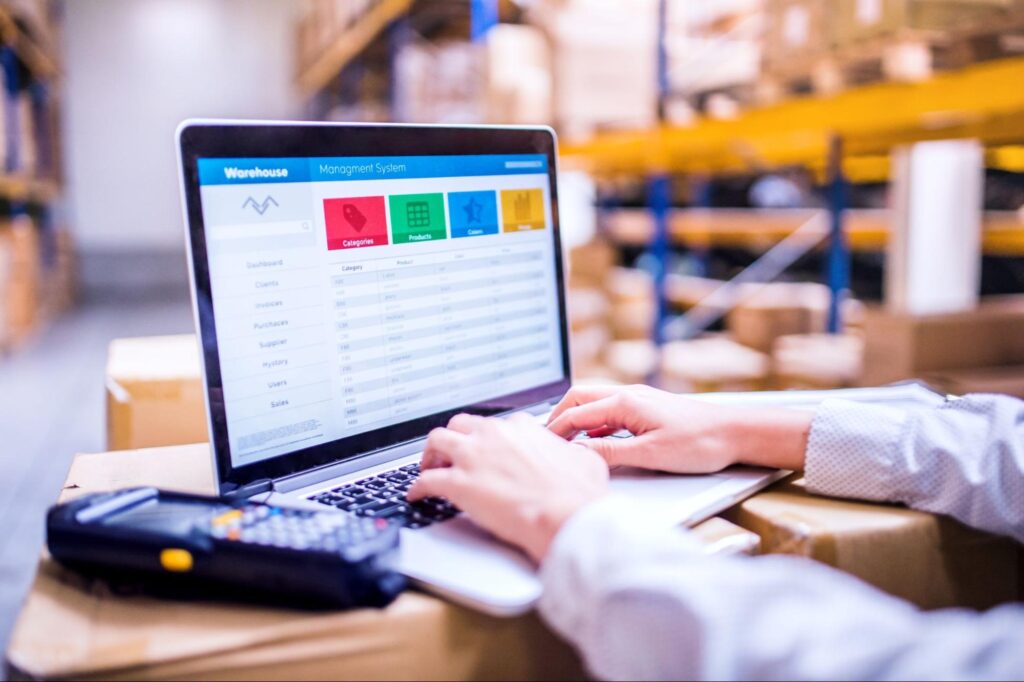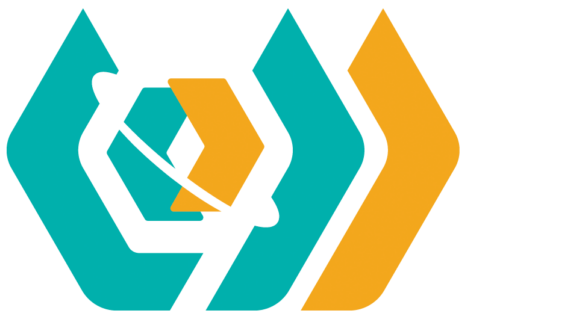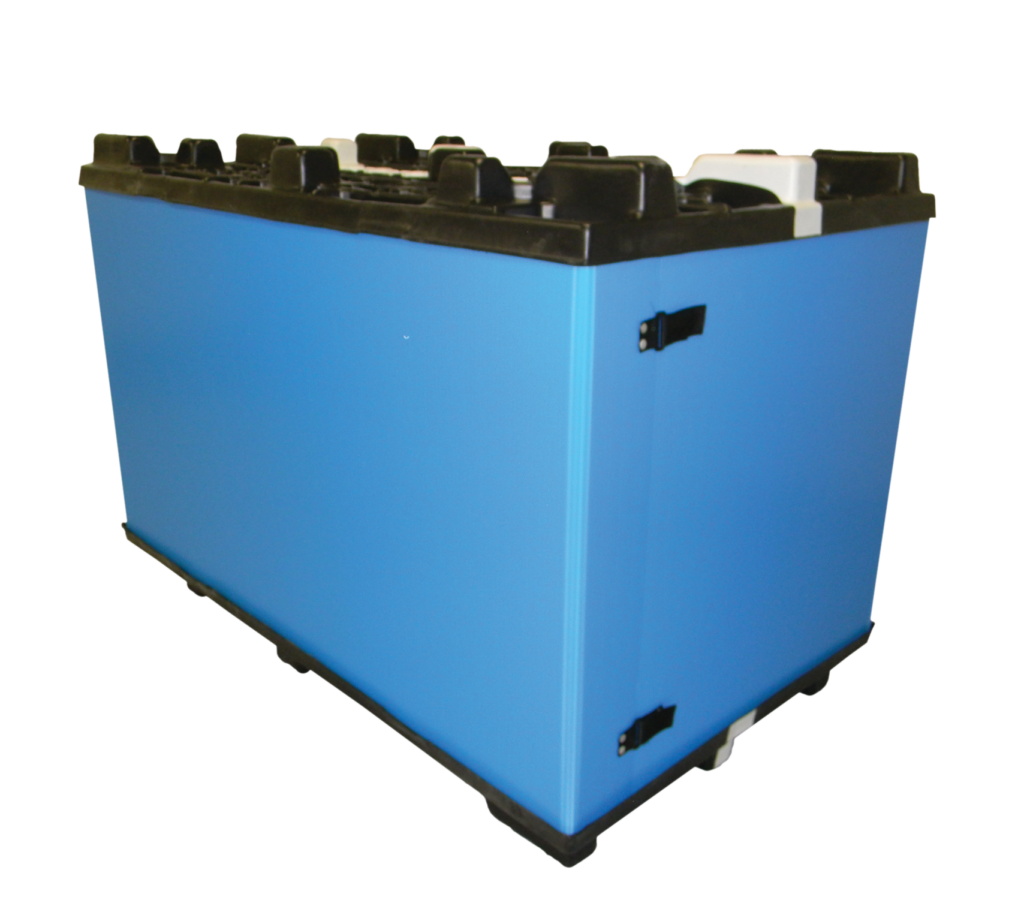Returnable packaging—reusable containers, totes, and custom dunnage—plays a critical role across industries like automotive, medical, construction, electronics, and logistics. These assets deliver cost savings and sustainability, but without effective tracking, companies risk loss, higher replacement costs, and operational headaches.
In this article, we’ll break down practical asset tracking solutions for returnable packaging—focusing on durable labeling, smart process design, and affordable tracking software, with a brief look at RFID and other advanced methods. Our goal: help you prevent loss, improve visibility, and get the most value from your reusable assets—using real-world tactics Universal Package supports every day.
Foundational Tracking: Barcode and QR Code Labels
The most established and widely adopted method for tracking returnable assets is the use of traditional labels, such as barcodes and QR codes. In this system, an operator with a handheld scanner reads the label at key transit points, pulling data from a central database to update the asset’s location and status. The reliability of this entire process, however, depends on the quality and durability of the label itself.
Choosing a Label That Lasts
Because a damaged or unreadable label can lead to a lost asset, selecting the right material and adhesive is the critical first step. The label’s material must be matched to the operational environment. For instance, polyester offers excellent resistance to chemicals and moisture, while vinyl is ideal for outdoor use because it withstands UV light. For extreme conditions, Metalphoto aluminum is impervious to heat and abrasion.
Equally important is the adhesive, which must create a permanent bond with the asset’s surface. High-tack adhesives are necessary for rough or textured surfaces common on plastic totes and containers.
Barcode (1D) vs. QR Code (2D): Key Differences
The type of code you print determines your data capabilities:
- Barcode (1D): Holds a limited amount of data (like a product ID), requires a direct line-of-sight for scanning, and can become unreadable if partially damaged.
- QR Code (2D): Stores significantly more data, can be scanned from any angle, and includes error correction, allowing it to be read even if part of the code is obscured or damaged.
Pros and Cons of a Label-Based System
Label-based systems are a popular entry point for asset tracking because the technology is universally understood and inexpensive to implement. However, this approach has its limitations. Without selecting the proper industrial-grade materials, labels can degrade from moisture, chemicals, or abrasion. The process also relies on manual, one-by-one scanning, which can increase labor costs and the risk of human error.
Ideal Use Case
Best suited for operations with lower tracking complexity or those in a closed-loop system, where a manageable number of containers move between a few known facilities. In these scenarios, manual scanning provides adequate visibility without a large technology investment.
Automated Tracking with RFID Technology
For operations requiring high-speed, automated data collection, Radio Frequency Identification (RFID) technology offers a powerful solution. Unlike methods that require a direct line of sight, RFID uses radio waves to identify and track assets, often without any manual intervention.
How RFID Works
An RFID system is composed of three main parts: tags, readers, and antennas. Each asset is fitted with an RFID tag containing a unique identifier. When the asset passes through a designated zone, a reader captures its data and transmits it to a central system.
A critical implementation decision is the choice between two types of tags:
- Passive RFID: These tags have no internal battery and are powered wirelessly by the RFID reader. They are lower in cost but have a shorter read range.
- Active RFID: These tags have an internal battery to broadcast their own signal, giving them a much longer read range at a higher cost.
For most supply chain applications, UHF (Ultra-High Frequency) RFID is the standard, offering the best balance of read range and data transfer speed.
Key Advantages of RFID
- Bulk Scanning: Readers can identify hundreds of tags simultaneously, dramatically reducing labor time.
- Non-Contact Identification: Assets can be identified while still inside boxes or packaging.
- Real-Time Data: The system provides an up-to-the-minute, accurate inventory picture.
- Industrial Durability: RFID tags are often encased in rugged, weatherproof housings to withstand harsh environments.
Implementation Considerations
- Higher Initial Costs: The upfront investment for readers, antennas, tags, and software is significant compared to label-based systems.
- Signal Interference: Radio signals can be blocked or reflected by metals and liquids, requiring strategic reader placement and specialized tags (e.g., “on-metal” tags).
- Complex Reader Configuration: The system requires professional setup to calibrate reader zones and power levels to ensure accurate data capture and avoid stray reads.
Ideal Use Case
RFID is the superior choice for high-volume or high-value operations where speed and accuracy are critical. It is highly effective in complex supply chains (e.g., automotive, logistics) where automation provides a clear return on investment.
The Brains of the Operation: Asset Tracking Software

Whether you use traditional labels or advanced RFID tags, the data you collect is only as valuable as your ability to use it. Asset tracking software acts as the central command center for your operation, ingesting data from your chosen method and transforming it from raw numbers into actionable business intelligence. It provides a single source of truth for your entire pool of returnable assets.
From Raw Data to Actionable Intelligence
At its core, the software aggregates information from every scan or read and presents it through a user-friendly dashboard that displays real-time asset status, location, and history. The true value, however, comes from features that drive operational control and cost savings:
- Customizable Dashboards: Get an at-a-glance, real-time view of key metrics like asset counts, locations, and dwell times.
- Automated Alerts & Notifications: Receive proactive alerts for critical events, such as overdue assets, low inventory levels, or required maintenance.
- Chain of Custody Tracking: Maintain a detailed, auditable history of who handled which asset and when, which is crucial for accountability and loss prevention.
- Mobile Functionality: Empower employees in the field or on the warehouse floor to scan and update asset status with a smartphone, ensuring data is captured accurately at
Breaking Down Data Silos with Seamless Integration
A critical factor in choosing a software solution is its ability to connect seamlessly with your existing business systems, such as an Enterprise Resource Planning (ERP) or Warehouse Management System (WMS). Proper integration prevents information silos, automates data updates across platforms, and eliminates error-prone manual entry.
Most modern platforms are Cloud-Based (SaaS), hosted by the provider for a recurring fee. This model offers lower upfront costs, automatic software updates, and secure access from anywhere.
Ideal Use Case
Asset tracking software is indispensable for any business looking to optimize its returnable packaging program. It is the foundational element for reducing losses, improving asset utilization, and making smarter, data-driven decisions—regardless of the tracking hardware used.
Putting It All Together: Choosing the Right Tracking System
Selecting the right asset tracking solution is not a matter of comparing labels, RFID, and software as separate options. Instead, the goal is to build a cohesive system by pairing the right data capture technology (the “how”) with a powerful management platform (the “so what”).
The best approach depends on your operational complexity, the volume and value of your assets, and your budget.
1. The Data Capture Layer: How Will You Identify Assets?
Your first choice revolves around the physical hardware you will use to identify each asset.
- For Simplicity and Low Cost (Labels): Traditional barcodes and QR codes are the most accessible entry point. They are ideal for smaller-scale operations or closed-loop systems where the lower efficiency of manual scanning is not a significant bottleneck. The primary trade-off is the reliance on manual labor and the potential for human error.
- For Automation and High-Volume (RFID): RFID is the clear choice when speed, accuracy, and automation are critical. While the initial investment is higher, the long-term reduction in labor costs and real-time inventory accuracy provide a clear return on investment in complex, high-volume supply chains.
2. The Intelligence Layer: How Will You Use the Data?
This is the most critical component for achieving a return on your investment. According to a report from MarketsandMarkets, the asset tracking market is projected to grow significantly, driven by the demand for centralized data and operational visibility. Asset tracking software is what provides the oversight and business intelligence needed to:
- Enhance Efficiency and Accuracy: The software aggregates data from all scans, providing a single, accurate view of your entire asset pool and eliminating the guesswork.
- Improve Scalability: A robust software platform can handle data from thousands of assets across dozens of locations, making it possible to grow your operations without losing control.
- Drive Sustainability: By providing clear data on asset utilization and lifecycle, the software helps you extend the life of your returnable packaging, reduce waste, and support a circular economy.
The Hybrid Approach: The Best of Both Worlds
Many businesses find the most effective solution is a hybrid approach that mixes technologies based on asset value and use case. For example:
- Use cost-effective QR code labels for standard, lower-value containers.
- Invest in durable RFID tags for high-value, custom-built racks or specialized equipment.
A flexible asset tracking software platform is the key to making this strategy work, as it can ingest and harmonize data from different sources into a single, unified dashboard. This allows you to tailor your investment to your needs while still maintaining complete visibility.
Building Your Strategy: 4 Key Questions to Ask
To design an asset tracking system that fits your business, start by answering four fundamental questions. Your answers will help you determine the right combination of technology and software for your operational needs and budget.
- What is the scope and value of your asset pool? Evaluate the number of assets you need to track, their individual replacement cost, and how frequently they are moving throughout your supply chain. High-volume, high-value assets justify a more significant investment in tracking technology.
- What level of visibility do you actually need? Define your data requirements. Is it enough to know the last seen location of an asset when it was manually scanned? Or do you require real-time, automated updates as assets move through specific zones? The answer will point you toward either a label-based or an RFID-based system.
- What are the environmental and operational challenges? Consider the conditions your assets will endure. Will they be exposed to moisture, chemicals, extreme temperatures, or rough handling? The environment will dictate the durability requirements for your labels or tags.
- What is your budget and expected Return on Investment (ROI)? Balance the initial investment in hardware and software against the long-term savings you expect from reduced asset loss, improved efficiency, and lower labor costs. A clear understanding of your potential ROI will help you justify the right level of investment.
Answering these questions will give you a clear roadmap. Consulting with industry experts, like the team at Universal Package, can help translate that roadmap into a tailored and cost-effective solution.
Asset Tracking in Action: Industry-Specific Solutions
The ideal asset tracking system is never one-size-fits-all. The right approach is always tailored to solve the unique challenges of a specific industry. Here’s how different sectors leverage tracking technology to protect their assets and streamline operations.
Automotive: The Need for Speed and Automation
In fast-paced, just-in-time automotive production, an uninterrupted flow of parts is essential. A single missing container can shut down an entire assembly line. For this reason, automated RFID systems are often the optimal choice. RFID gates at dock doors can scan hundreds of parts containers on a truck in seconds, ensuring the right components are in the right place at the right time without manual intervention.
Medical and Pharmaceutical: The Demand for Perfect Accountability
In the medical field, the primary drivers are patient safety, sterilization, and strict regulatory compliance. This requires a perfect, auditable chain of custody. A common solution is using durable, sterilizable QR codes on reusable surgical trays and equipment. These can be scanned at every critical step—from cleaning and sterilization to the operating room and back—with the data feeding into a central software platform to create an immutable record for compliance.
Electronics: Protecting High-Value, Sensitive Components
The electronics industry manages high-value, delicate components that are susceptible to damage. The goal is preventing both loss and mishandling. A hybrid system is often the most effective approach. Durable barcode labels can track individual component totes through the assembly process, while RFID provides automated tracking for bulk shipments between facilities. The asset tracking software integrates both data streams for complete visibility.
Construction: Durability for a Rugged, Decentralized Environment
Construction involves managing tools, equipment, and materials across multiple, rugged, and often temporary job sites. Here, durability and mobile accessibility are paramount. Industrial-grade, weatherproof QR code labels are a cost-effective and robust solution. Field crews can use a mobile app on their smartphones to scan containers and equipment as they are delivered or moved, ensuring accountability even in a decentralized environment.
Each of these industries benefits from a solution that reduces asset loss and improves overall asset availability.
Unlock Sustainability Through Smarter Asset Management
Beyond driving down costs and boosting efficiency, a robust asset tracking system is a powerful engine for sustainability. By providing complete visibility into the lifecycle of every returnable asset, tracking software allows businesses to move from a reactive to a proactive model of resource management. This data-driven approach is the key to building a truly circular economy for your packaging.
Here’s how the data translates into tangible environmental benefits:
- Extending Asset Lifecycles: The system can track usage cycles and automatically flag containers that are due for inspection or clean & repair services, preventing premature disposal.
- Preventing Over-Production: Real-time data allows you to right-size your inventory, preventing the unnecessary purchase and manufacturing of new containers.
- Reducing Waste by Minimizing Asset Loss: A reliable tracking system dramatically reduces asset loss, which directly cuts the environmental impact of your operations.
Ultimately, asset tracking transforms sustainability from a vague corporate goal into a measurable, data-backed operational practice. It creates a system where you use less, waste less, and get more value from every asset you own.
The Future is Smarter: Emerging Technologies in Asset Intelligence

The evolution of asset tracking is moving far beyond simple location data and toward complete operational intelligence. The foundational systems of today are paving the way for a new generation of technologies that will make supply chains more predictive, resilient, and transparent. Here are the key advancements shaping the future.
1. Beyond Location: Tracking Asset Condition with IoT
The Internet of Things (IoT) is transforming returnable packaging into “smart assets.” By embedding low-cost sensors, you can monitor not just the location of a container, but its real-time condition. This includes:
- Temperature and Humidity: Critical for protecting sensitive goods in the pharmaceutical, medical, and food industries.
- Shock and Impact: Alerts can be triggered if a container of fragile electronics is dropped or mishandled.
- Tamper-Proofing: Sensors can report if a high-value container has been opened outside of a designated secure area.
2. From Reactive to Predictive: The Power of AI and Analytics
As your asset tracking software collects more historical data, it becomes a powerful tool for predictive analytics. Using machine learning algorithms, future systems will be able to move from reacting to problems to preventing them entirely. This includes:
- Forecasting Maintenance Needs: Predicting when an asset will require service based on usage cycles and environmental data, extending its life and preventing unexpected failures.
- Identifying Loss Hotspots: Analyzing patterns to pinpoint specific routes, facilities, or partners where assets are most likely to go missing, allowing for proactive intervention.
3. Guaranteeing Trust: Blockchain for an Unbreakable Chain of Custody
For industries where an auditable chain of custody is non-negotiable (like aerospace and pharmaceuticals), blockchain technology offers the ultimate in security and trust. It provides an immutable and transparent digital ledger of every asset’s journey. This creates a single, shared source of truth that cannot be altered, mitigating fraud, simplifying audits, and providing an unbreakable record of an asset’s history.
These advancements are building on the tracking systems of today to create smarter, more autonomous supply chains that offer a significant competitive advantage.
Build a Smarter System, Not Just a Tracking Method
Effective asset tracking is not about choosing between labels, RFID, or software. It’s about designing an intelligent, cohesive system that provides the visibility you need to protect your investments, drive efficiency, and operate more sustainably.
The foundation of any modern tracking strategy is a robust software platform that transforms raw data from the field into actionable business intelligence. By pairing that central intelligence hub with the right data capture technology for your specific needs—whether it’s cost-effective QR codes for standard containers or automated RFID for high-value assets—you create a system that is perfectly tailored to your operational environment and budget.
By carefully assessing your operational scope, environmental challenges, and long-term goals, you can build a solution that keeps your returnable packaging visible, productive, and profitable.
Ready to design an asset tracking system that fits your business? Contact Universal Package today to explore how the right combination of durable packaging and tracking expertise can protect your assets and streamline your supply chain.





